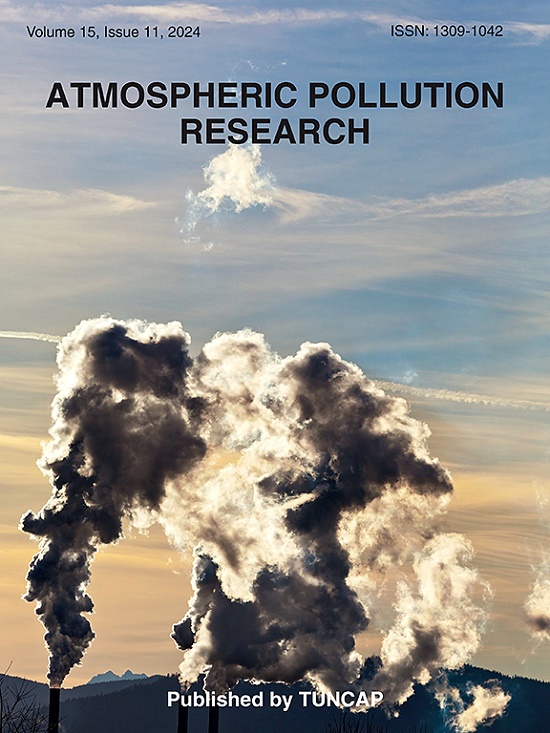Real-time nowcasting of NO2 products from geostationary environment monitoring spectrometer using a conditional generative adversarial network
IF 3.5
3区 环境科学与生态学
Q2 ENVIRONMENTAL SCIENCES
引用次数: 0
Abstract
In East Asia, megacities like Seoul, Tokyo, and Shanghai frequently recording high nitrogen dioxide (NO2) concentrations due to traffic and industrial activity require urgent efforts to enhance short-term monitoring and forecasting systems. This research presents a deep-learning (DL) model for nowcasting atmospheric NO2 concentration products derived from the geostationary environment monitoring spectrometer (GEMS) on the Geo-Kompsat-2B satellite from 1-h to 3-h. The DL model utilizes pairs of GEMS NO2 products as input and output datasets. The nowcasting DL model was developed using a data-to-data (D2D) translation method incorporating conditional generative adversarial network techniques. The D2D-nowcast NO2 model was trained and tested for 1, 2, and 3-h predictions. The test results of the D2D model demonstrated excellent statistical performance, including a correlation coefficient of 0.805, a root-mean-square error of 0.162 ⨉ 1016 molecules/cm2, and a bias of 0.046 ⨉ 1016 molecules/cm2 for the 3-h prediction. Furthermore, the D2D-nowcast NO2 concentrations were validated using the Tropospheric Monitoring Instrument and Pandora NO2 measurements, demonstrating high agreement. Consequently, this study aims to support real-time operational monitoring by supplementing temporal gaps in satellite observations without relying on numerical models and provides valuable supplements for decision-making by air quality forecasters.

基于条件生成对抗网络的同步环境监测光谱仪二氧化氮产品实时临近预报
在东亚,由于交通和工业活动,首尔、东京和上海等特大城市经常录得高二氧化氮(NO2)浓度,迫切需要加强短期监测和预报系统。本文提出了一种深度学习(DL)模型,用于近预报Geo-Kompsat-2B卫星上地球同步环境监测光谱仪(GEMS)在1 ~ 3小时内获取的大气NO2浓度产品。DL模型利用GEMS NO2产品对作为输入和输出数据集。利用数据到数据(D2D)转换方法,结合条件生成对抗网络技术,开发了临近投射深度学习模型。D2D-nowcast NO2模型进行了1、2和3小时预测的训练和测试。D2D模型的测试结果显示了良好的统计性能,相关系数为0.805,均方根误差为0.162 * 1016个分子/cm2, 3小时预测偏差为0.046 * 1016个分子/cm2。此外,利用对流层监测仪器和潘多拉NO2测量数据对D2D-nowcast NO2浓度进行了验证,显示出较高的一致性。因此,本研究旨在通过在不依赖数值模型的情况下补充卫星观测中的时间差距来支持实时操作监测,并为空气质量预报员的决策提供有价值的补充。
本文章由计算机程序翻译,如有差异,请以英文原文为准。
求助全文
约1分钟内获得全文
求助全文
来源期刊

Atmospheric Pollution Research
ENVIRONMENTAL SCIENCES-
CiteScore
8.30
自引率
6.70%
发文量
256
审稿时长
36 days
期刊介绍:
Atmospheric Pollution Research (APR) is an international journal designed for the publication of articles on air pollution. Papers should present novel experimental results, theory and modeling of air pollution on local, regional, or global scales. Areas covered are research on inorganic, organic, and persistent organic air pollutants, air quality monitoring, air quality management, atmospheric dispersion and transport, air-surface (soil, water, and vegetation) exchange of pollutants, dry and wet deposition, indoor air quality, exposure assessment, health effects, satellite measurements, natural emissions, atmospheric chemistry, greenhouse gases, and effects on climate change.
 求助内容:
求助内容: 应助结果提醒方式:
应助结果提醒方式:


